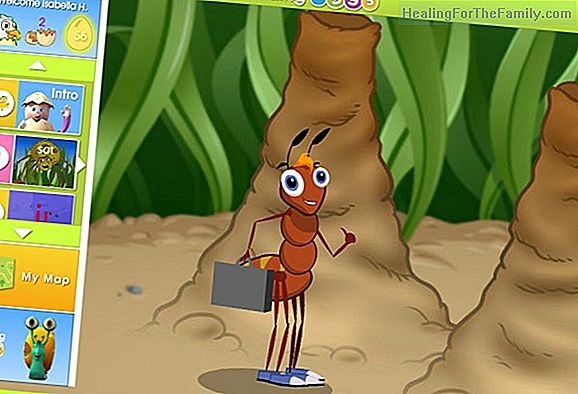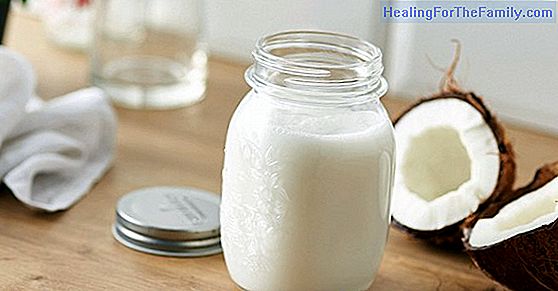Milk substitute foods for children with lactose intolerance
Milk is one of the main sources of calcium for children's growth. However, when infants and children have lactose intolerance, it is important to know which are the milk substitute foods so that this difficulty in digesting the lactose in the milk does not stop the normal growth of children . The di
Milk is one of the main sources of calcium for children's growth. However, when infants and children have lactose intolerance, it is important to know which are the milk substitute foods so that this difficulty in digesting the lactose in the milk does not stop the normal growth of children .
Thedietitian and nutritionist María Luján Solerexplains to parents what alternatives parents have to feed babies and children when lactose intolerance leads to symptoms in children and babies.
Alternatives to milk in the diet of children

What is the difference between intolerance and lactose allergy?
It is very common to confuse an intolerance with a food allergy, but it is not the same. An allergy is an exaggerated immune response triggered by the consumption of a food that is well tolerated by the rest of the population. The body produces antibodies against immunoglobulin E (IgE) for a particular food. They can manifest immediately when eating, touching or inhaling the food. The symptoms of food allergy are hives, redness, swelling, vomiting, abdominal pain, asthma, rhinitis, respiratory distress or an anaphylactic reaction.
Intolerance is the inability to properly or completely digest food. It is characterized by the presence of gastrointestinal symptoms or in other systems such as respiratory tract, skin, neurological, skeletal muscle, reproductive and immune.
Is it possible to accustom the body to digest lactose?The amount of lactose to be consumed will depend on each person. It is known that there are people who have a deficit of 100 percent of lactase, which is the enzyme that the body has to digest lactose, and others that have less. It can also happen that lactose is not tolerated as a complication of another pathology.
How much lactose begins to be harmful for children who can not tolerate lactose?
You can not say how much can be harmful at a general level, since this acceptance is personal. It is known that there are products that have little lactose and there are people who tolerate them very well, but others very badly. There are on the market products with very little lactose close to 0.01 percent lactose, which are generally well tolerated.
Is it necessary to completely eliminate milk from children's diet when there is lactose intolerance?
Decreasing or eliminating milk products from the diet usually improves symptoms. Most children with low lactase levels can drink up to half a cup of milk without symptoms. The abandonment of dairy products and derivatives is a big mistake because it has important negative effects such as increased risk of osteoporosis due to lack of calcium. Dairy products and derivatives share a series of nutritional properties such as the contribution of proteins of high biological value, minerals such as calcium, phosphorus, potassium and iodine and vitamins B1, B2 and B3, A and D which makes them difficult to replace foods.
What dairy foods can be an alternative to milk for children?Cow's milk has a lactose content in the order of 4-5 percent, while the average lactose content of low-lactose milk preparations can vary from 0.1 to 1.8 percent.

- Butter and cheeses (they have less lactose than milk)
- Fermented dairy products such as yogurt
- Goat's milk
- Ice cream, milkshakes and hard or hard cheeses
- Milk and milk products that are lactose-free (some brands certify a lactose content lower than 0.01%)
- Cow milk treated with lactase for older children and adults
- Soy formulas for babies under 2 years old
- Soy or rice milk for young children
How can we increase calcium intake in children's food when Is milk not consumed?
Lactase enzymes can be added to normal milk or can be taken in capsules or as chewable tablets. If it is necessary to incorporate calcium, vitamin D and riboflavin, the following can be used:
- Calcium supplements
- Calcium source foods: green leafy vegetables, oysters, sardines, canned salmon, shrimp and broccoli
- Products that have added calcium
Food labels should be read very carefully. Lactose is also found in some non-dairy products. If this is unknown and the lactose intake is maintained over time, as complications, you can find weight loss and malnutrition.
What are the causes of lactose intolerance?
Among the most common causes is surgery of the intestine, infections in the small intestine due to viruses or bacteria, which can damage the cells that cover it (more often in children) and intestinal diseases such as celiac sprue. . Lactose intolerance related to celiac disease can occur at the time of diagnosis of the disease as a result of intestinal injury. Generally, it is transient and disappears with the recovery of the intestinal villi. The symptoms (diarrhea, bloating, flatulence ...) of intolerance disappear with the diet.
How can lactose intolerance in children be prevented?
To this day, there is still no known way to avoid or prevent suffering from lactose intolerance.
Marisol New. Editor of Guiainfantil.com












